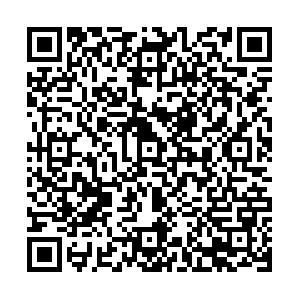Capacity of exclusive dual left-turn lanes at signalized intersection
-
摘要: 在北京市6个信号交叉口双左转车道交通流数据调查的基础上, 应用数理统计学方法对信号交叉口双左转车道饱和车头时距和饱和流率以及影响因素进行了研究。通过比较算术平均值、截尾均值和中值计算结果, 提出应用截尾均值法计算饱和车头时距与饱和流率。研究了饱和流率与车道宽度、转弯半径的关系, 应用回归方法给出了饱和流率与转弯半径关系模型, 并对内、外侧车道饱和流率与单一左转车道饱和流率进行了比较。研究结果表明: 内侧车道饱和车头时距为2.14~2.60 s, 外侧车道饱和车头时距为2.08~2.37 s, 平均饱和流率为1 600 pcu·(h·lane)-1; 双左转车道饱和流率为单一左转车道饱和流率的1.80~2.05倍。Abstract: Based on the survey data of six signalized intersections with dual left-turn lanes in Beijing, the saturation time-headways, saturation flow rates and their influencing factors of dual left-turn lanes at signalized intersections were studied by using statistical methods.By comparing with arithmetic mean value and median value, the trimmed mean value method was used to calculate the saturation time-headway and saturation flow rate.The effects of lane width and turning radius on the saturation flow rate were studied, and the regression model of saturation flow rate with turning radius was suggested.The saturation flow rates of inside lane, outside lane and single left-turn lane were compared.Analysis result shows that the saturation time-headway of inside lane is 2.14~2.60 s, the saturation time-headway of outside lane is 2.08~2.37 s, and the average saturation flow rate is 1 600 pcu·(h·lane)-1.The ratio of sum saturation flow rate of inside lane and outside lane to that of single left-turn lane is 1.80~2.05.
-
Key words:
- dual left-turn lanes /
- saturation time-headway /
- saturation flow rate /
- turning radius
-
表 1 饱和车头时距统计结果
Table 1. Statistical result of saturation time-headway
交叉口 车道位置 样本量 饱和车头时距/s 标准差 95%置信区间 偏度 峭度 算术均值 中位数 5%截尾均值 大望桥 内侧 124 2.36 2.18 2.29 0.78 [2.23, 2.50] 1.67 3.73 外侧 101 2.14 2.00 2.08 0.37 [2.03.2.25] 2.06 6.08 光辉桥 内侧 96 2.47 2.32 2.38 0.86 [2.30, 2.64] 2.00 6.08 外侧 129 2.41 2.30 2.37 0.55 [2.34, 2.48] 2.23 11.69 广渠路-大望路 内侧 47 2.20 2.03 2.14 0.73 [1.99, 2.40] 1.22 1.07 外侧 141 2.24 2.17 2.20 0.60 [2.14, 2.34] 1.15 1.71 京客龙 内侧 68 2.19 2.05 2.14 0.63 [2.03, 2.34] 1.52 3.43 外侧 38 2.25 2.25 2.24 0.28 [2.16, 2.34] 0.26 0.32 朝阳北路-十里堡路 内侧 71 2.74 2.39 2.60 1.70 [2.43, 3.05] 3.20 16.43 外侧 86 2.30 2.10 2.23 0.52 [2.14, 2.45] 1.48 2.59 华威桥 内侧 276 2.30 2.12 2.20 0.85 [2.20, 2.40] 3.52 22.50 外侧 139 2.44 2.37 2.37 0.70 [2.32, 2.54] 2.26 7.72 表 2 饱和流率统计结果
Table 2. Statistical result of saturation flow rate
交叉口 车道位置 饱和流率/[pcu·(h·lane)-1] 双左转车道饱和流率/(pcu·h-1) 直行车道饱和流率/[pcu·(h·lane)-1] 流率比 大望桥 内侧 1 572 3 303 1 671 0.94 外侧 1 731 1.04 光辉桥 内侧 1 513 3 032 1 792 0.84 外侧 1 519 0.85 广渠路-大望路 内侧 1 682 3 318 1 648 1.02 外侧 1 636 0.99 京客龙 内侧 1 682 3 289 1 665 1.01 外侧 1 607 0.97 朝阳北路-十里堡路 内侧 1 385 2 999 1 578 0.88 外侧 1 614 1.02 华威桥 内侧 1 636 3 155 1 655 0.99 外侧 1 519 0.92 平均值 1 591 3 182 1 668 0.96 表 3 大型车辆折算系数
Table 3. Conversion coefficients of large vehicle
交叉口 车道宽度/m 转弯半径/m 车头时距/s 折算系数 小型车 大型车 大望桥 2.9 45.0 2.08 4.55 2.19 光辉桥 2.9 48.0 2.36 3.70 1.57 广渠路-大望路 3.0 50.0 2.14 5.83 2.65 京客龙 3.3 39.0 2.24 3.31 1.48 朝阳北路-十里堡路 3.0 27.0 2.23 3.26 1.47 华威桥 3.0 60.0 2.37 3.75 1.58 平均值 3.0 44.8 2.21 4.35 1.97 表 4 饱和流率与转弯半径关系
Table 4. Relation between saturation flow rate and turning radius
转弯半径/m 饱和流率观测值/(pcu·h-1) 饱和流率预测值/(pcu·h-1) 预测相对误差/% 27 2 999 3 037 1.28 39 3 289 3 191 -2.98 45 3 303 3 240 -1.91 48 3 032 3 260 7.53 50 3 318 3 273 -1.36 60 3 155 3 323 5.33 表 5 内、外侧左转车道饱和车头时距对比
Table 5. Comparison of saturation time-headways for outer and inner left-turn lanes
交叉口 车道位置 样本量 均值/s 标准差 U值 大望桥 内侧 124 2.36 0.78 2.78 外侧 101 2.14 0.37 光辉桥 内侧 96 2.47 0.86 0.59 外侧 129 2.41 0.57 广渠路-大望路 内侧 47 2.20 0.73 -0.34 外侧 141 2.24 0.60 京客龙 内侧 68 2.19 0.63 -0.68 外侧 38 2.25 0.28 朝阳北路-十里堡路 内侧 71 2.74 1.70 2.10 外侧 86 2.30 0.52 华威桥 内侧 276 2.30 0.85 -1.79 外侧 139 2.44 0.70 表 6 饱和流率对比
Table 6. Comparison of saturation flow rates
交叉口 车道宽度/m 双左转车道饱和流率/(pcu·h-1) 单左转车道饱和流率/(pcu·h-1) 流率比 大望桥 2.9 3 303 1615 2.05 光辉桥 2.9 3 032 1 615 1.88 广渠路-大望路 3.0 3 318 1 628 2.04 京客龙 3.3 3 289 1 697 1.94 朝阳北路-十里堡路 3.0 2 999 1 628 1.79 华威桥 3.0 3 155 1 628 1.88 平均值 3 182 1 652 1.93 -
[1] SPRING G S, THOMAS A. Doubleleft-turnlanes in mediumsize cities[J]. Journal of Transportation Engineering, 1999, 125(2): 138-143. [2] RAY J C. Two lane left turn studied at signalized intersections[J]. Traffic Engineering, 1965, 35(7): 17-58. [3] COURAGE K, STEPHENS B, GAN A, et al. Triple left-turn lanes at signalized intersections[R]. Gainesville: The University of Florida, Florida International University, 2002. [4] SHAIK R A, GRAHAM J R. Efficiency of dual left-turn lane intersections in Charlotte: a study using TRAFNETSIM[J]. ITE Journal, 1996, 66(4): 26-33. [5] CAPELLE D G, PINNELL C. Capacity study of signalize diamond interchanges[R]. Washington DC: TRB, 1961. [6] KAGOLANU K, SZPLETT K D. Saturation flow rates of dual left-turn lanes[C]//Australian Road Research Board. Proceedings of the Second International Symposiumon Highway Capacity. Sydney: Australian Road Research Board, 1994: 325-334. [7] STOKES R W, MESSER C J, STOVER V G. Saturation flows of exclusive double left-turn lanes[J]. Transportation Research Record, 1986(1091): 86-95. [8] 赵林. 城市道路信号交叉口通行能力及其影响因素研究[D]. 北京: 北京工业大学, 2007.ZHAO Lin. Research on capacity and influencing factors of signalized intersections[D]. Beijing: Beijing University of Technology, 2007. (in Chinese) [9] WORTMAN R H, MAYER P A. Capacity of dual left-turn lanes[R]. Washington DC: Arizona Department of Transportation, 1987. [10] 刘勇, 严宝杰. 基于动力学理论的交通流微分方程[J]. 长安大学学报: 自然科学版, 2008, 28(6): 69-72. https://www.cnki.com.cn/Article/CJFDTOTAL-XAGL200806018.htmLIU Yong, YAN Bao-jie. Traffic flow differentiating equation based on kinetic theory[J]. Journal of Chang'an University: Natural Science Edition, 2008, 28(6): 69-72. (in Chinese) https://www.cnki.com.cn/Article/CJFDTOTAL-XAGL200806018.htm [11] 王剑, 张生瑞, 李华. 基于系统最优的高速公路改扩建交通分流模型[J]. 长安大学学报: 自然科学版, 2008, 28(5): 95-98. https://www.cnki.com.cn/Article/CJFDTOTAL-XAGL200805023.htmWANG Jian, ZHANG Sheng-rui, LI Hua. Traffic divergence model of freeway during reconstruction based on system optimization[J]. Journal of Chang'an University: Natural Science Edition, 2008, 28(5): 95-98. (in Chinese) https://www.cnki.com.cn/Article/CJFDTOTAL-XAGL200805023.htm -





 下载:
下载:


